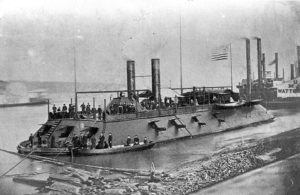Civil War Quiz: What Do You Know About the Causes for the Civil War Other Than Slavery?
Q#1 – Historically, why did southern slave-holding states have little perceived need for industrialized mechanization?
Q#2 – Why were the Northern states generally opposed to the South’s right to sell cotton and purchase manufactured goods from any nation?
Q#3 – When the Southerners Democrats controlled Congress in the 1830s, 1840s, and 1850s, what legislative actions did they take to favor the Southern economy?
Q#4 – In the 1850s, what legislative actions did the Republican-controlled Congress take to protect Northern industrial interests?
Q#5 – What was the constitutional rationale the South argued to support a state’s right to secede?
Q#6 – What was the Northern response to the Southern rationale that each state had the right to leave the Union?
Q#7 – In the early 19th century, famous spokesmen such as Andrew Jackson and Daniel Webster were advocating what philosophy regarding the country?
Q#8 – As the 19th Century evolved and time passed, what philosophy regarding the country did Southerners hold?
Q#9 – What was the main reason most of America’s premier entrepreneurs such as Cornelius Vanderbilt and Samuel Colt based themselves in the North?
Q#10 – What action in 1832, where military action was threatened by the Federal government against South Carolina, helped to plant the initial seeds of secession?
Q#11 – What important factor was changing the political balance of power that increasingly was adversely affecting the South?
Q#12 – Why was the “American System” (which was an economic plan) advocated by Henry Clay in Congress and supported by many nationalist supporters, whose purpose was to develop American industry and international commerce, opposed by the South?
Q#13 – What was a mitigating social factor that pushed upper-class white Southerners to support secession from the Union and eventually Civil War?
Q#14 – What economic event occurred in 1857 that strengthened the Republican Party and heightened sectional tensions?
Q#15 – Thomas Prentice Kettell, former editor of the Democratic Review, in the late 1850s gathered an array of statistics published in his book on Southern Wealth and Northern Profits. What premise did Kettell’s book advance that convinced many Southerners their only option for economic fairness was secession?

